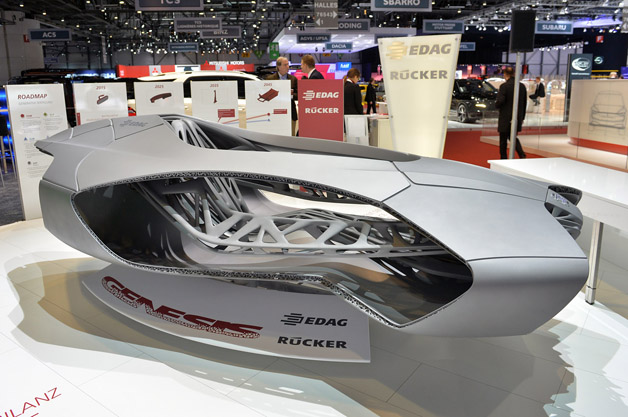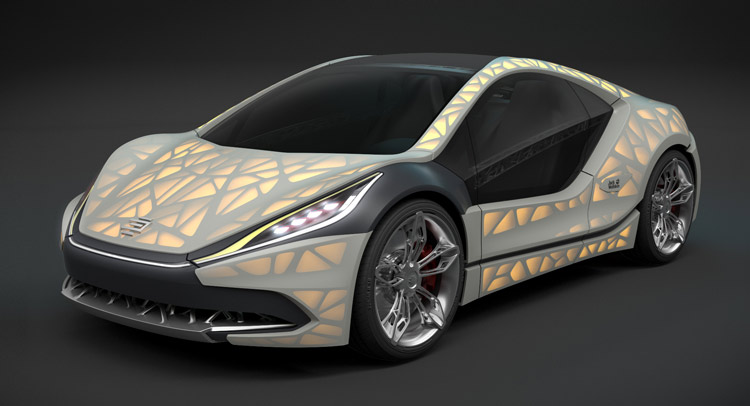The GENESIS concept, from German design studio EDAG and presented at the 2014 Motor Show in Geneva, is probably one of the most fascinating experiments in future 3D printed mobility; however, EDAG’s new Light Cocoon concept heading for Geneva next March is possibly even more breathtaking. Not so much because the design even more far out than its predecessor as much as it is actually almost within the grasp of current technologies.
The automotive design specialists created GENESIS inspired by the way a turtle shell wraps around and protects the body of the animal. They also demonstrated that future cars would need to be manufactured as a single piece, and that this would only be possible by 3D printing. The new concept explores the areas of topological optimization, while still leveraging their previous generative, biomimetic designs, to create a sport vehicle that is as light as scientifically possible, without sacrificing structural integrity.
As is often the case for EDAG, every single detail of the Light Cocoon concept was carefully assessed, studied and implemented. Unlike the GENESIS, this is not just a study but a complete bionically-optimized vehicle structure. “We are pursuing the vision of sustainability – as demonstrated by nature: lightweight, efficient, and without any waste,” explains EDAG’s head designer, Johannes Barckmann. “The result: the ‘EDAG Light Cocoon’ presents a stable, branch-like, load-bearing structure from the 3D printer, which only uses material where it is absolutely necessary.”
The vehicle’s design was created through algorithmic topological optimization, one of the most advanced fields of industrial 3D printing applications, where all excess material is removed and different densities are assigned to different parts of a single component according to the weight and stresses its needs to undergo. Usually this means creating a component that looks the same as an injection molded part, only it weights a lot less (as much as 90% less).
EDAG used the optimization process to actually improve upon the appearance of the vehicle. Instead of treating the body as a closed surface here, any material not actually needed for the special load cases was removed. EDAG’s simulation experts carried out static and dynamic calculations for the basics of this topologically-optimized ideal structure, and, in this way, helped to confirm its suitability as a potential lightweight concept. The result is a design that is incredibly complex but, as 3D Systems’s Avi Reichental said in a recent TED Talk, “complexity is free with 3D printing.”
The “empty spaces” are filled with a lightweight and weatherproof cloth material provided by outdoor specialists Jack Wolfskin. Although it is not 3D printed nor, I reckon, 3D printable (at this point), this material is also extremely advanced in terms of performance, as explained by EDAG CTO Jörg Ohlsen:
“Even if it sounds futuristic to begin with, this approach has its own special appeal: weighing no more than 19 g/m², the Jack Wolfskin material supports maximum lightweight design requirements with minimum weight. To give you a comparison: this extremely strong material is four times lighter than standard copier paper. Combined with the topologically optimized, additively manufactured structure, it offers enormous potential and stimulus for the ultimate lightweight construction of the future.”
The result is simply breathtaking and gives us yet another in-depth and reasoned look into how 3D printing is going to make land vehicle mobility a lot more sustainable, efficient, and beautiful.





